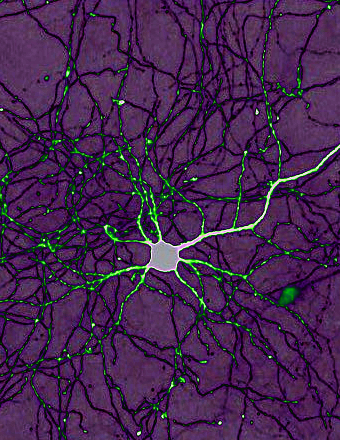Memory makes DNA change
 Researchers have shown that forming memories involves rapid changes to DNA.
Researchers have shown that forming memories involves rapid changes to DNA.
An international research team, including scientists from the Queensland Brain Institute (QBI), has discovered a significant mechanism underlying memory formation.
The findings focuses on the dynamic behaviour of a specific DNA structure, known as G-quadraplex DNA (G4-DNA), which plays a critical role in the regulation of gene expression associated with long-term memory.
The study, published in the Journal of Neuroscience, marks the first evidence that G4-DNA is present in neurons and actively involved in modulating the expression of memory states.
Dr Paul Marshall from the Australian National University, who led the research alongside colleagues from Linköping University, Weizmann Institute of Science, and the University of California Irvine, highlighted the importance of dynamic DNA structures in memory consolidation.
Traditionally, DNA has been recognised as a stable, right-handed double helix primarily altered during processes such as replication and transcription.
However, recent insights suggest a much more versatile role for DNA.
“DNA topology is much more dynamic than the static, right-hand double helix, as presumed by most researchers in the field,” says QBI's Professor Tim Bredy.
He further noted that over 20 different DNA structure states have been identified, each potentially playing a unique role in gene regulation.
The core of the team's findings centre on the G4-DNA structure, which accumulates in neurons in response to learning.
This structure forms rapidly - within milliseconds to minutes - mirroring the rate of neuronal transcription triggered by new experiences.
“The G4-DNA structure can thus be involved in both the enhancement and impairment of transcription in active neurons, depending on their activity, to enable different memory states,” the study says.
One practical implication of the research is its potential impact on understanding and possibly treating memory-related conditions, such as the extinction of conditioned fear - a critical survival mechanism.
“This process is dependent on temporal interactions between the transcriptional machinery and a variety of DNA structures, including G4-DNA, rather than being determined solely by DNA sequence or DNA modification as so often has been presumed,” said Professor Bredy.
This discovery not only expands the fundamental understanding of how DNA functions as a transcriptional control device but also sets the stage for future studies that could lead to innovative therapies for various psychiatric disorders, leveraging the dynamic nature of DNA in the brain.







 Print
Print



